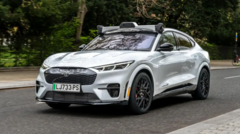Uber is set to revolutionize urban transport by launching trials of driverless taxis in London by spring 2024. This plan, in collaboration with the UK-based artificial intelligence firm Wayve, follows altered government regulations aimed at expediting the introduction of autonomous "bus and taxi-like" services. Initially projected for a 2026 rollout, the timeline has now shifted to 2027, reflecting the UK's commitment to integrating autonomous vehicle technology sooner.
While specific operational details for the trial remain under wraps, Uber has expressed intentions to integrate these driverless options into its UK app once legislation permits. The Department for Transport anticipates that this sector could generate approximately 38,000 jobs and contribute £42 billion to the economy by 2035. However, there are concerns about potential job losses, as highlighted by Andy Prendergast of GMB, who emphasizes the need to assess the social implications of driverless technology.
To illustrate its capabilities, Uber has previously launched a robotaxi service in Austin, Texas, allowing customers to opt for driverless vehicles at equal fares to standard rides. Although countries like China, UAE, and Singapore have seen fully autonomous cars logging millions of miles on public roads, the safety of such vehicles remains a topic of active investigation—including mixed reports of incidents involving robotic taxis.
Having experienced an autonomous ride with Wayve's technology in London, it became evident that while the vehicle adeptly navigated complex city scenarios, including traffic and pedestrians, it exhibited an extra layer of caution compared to human drivers. Backed by sensors, radars, and an AI system fine-tuned for real-time responses, the experience provided a glimpse into the future of urban transportation, which is slowly but surely approaching reality.


















